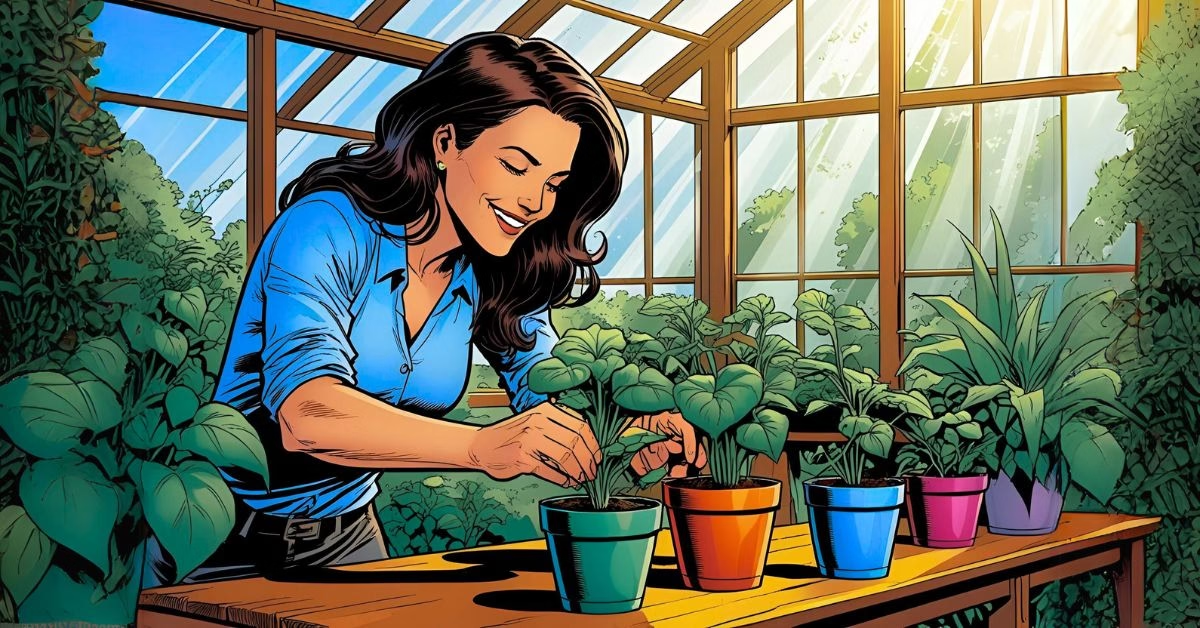🌿 Introduction to Grow Indoors Plants
Indoor gardening is such a fun and fulfilling hobby that allows you to bring a little bit of nature right into your home! Whether you have limited space, are stuck indoors because of the weather, or just love the peace that comes from nurturing plants, there are so many fantastic options to grow indoors. From vibrant greenery to delicious edible plants, this post explores some of the best and easiest plants to grow indoors, tailored to your space, goals, and lifestyle. Let’s get started on this green adventure together!
💡 What is the easiest thing to grow indoors?
The easiest indoor plants are low-maintenance, forgiving, and great for beginners or busy households. These plants are great at adjusting to low light, handle typical indoor temperatures like champs, and happily thrive on good old tap water! They’re super easy to care for, needing just a little attention here and there, so you can enjoy their growth without a lot of fuss.
The easiest indoor plants are those that match your lifestyle, available space, and light conditions. Generally, decorative plants are the easiest, as they’ve been bred for resilience and aesthetics. Herbs can be easy, too, if you have a sunny spot, and vegetables tend to be more demanding, especially fruiting varieties.
💡 Reminder: Easiest = plants that match your ability and lifestyle.









🌞 Can you grow indoors year-round?
Yes, you absolutely can grow indoors throughout the year — but a few adaptations help:
- Use grow lights during darker months
- Maintain humidity with water trays or humidifiers
- Keep the temperature steady, avoiding draughts and radiators
- Adjust your watering by season
🍅 This is especially important for edible plants like tomatoes and basil, which require consistency.
🌡️ What specific conditions are required for growing each type of plant indoors?
Decorative plants
Prefer indirect sunlight, steady humidity, and average room temperatures. Mist occasionally and avoid harsh light.
Herbs
Need plenty of light — a bright windowsill or grow light is ideal. Use well-draining soil and water when the topsoil feels dry to the touch.
Vegetables
Require more light, especially fruiting varieties. Use deeper containers to promote proper root growth, and feed your plants occasionally for optimal results.
Sprouting foods
Grow best in trays with good airflow and moisture. They complete their cycle quickly, so you’ll be harvesting in days.
📍Choose plants based on your natural environment to make care easier.
🛠️ How can I troubleshoot common Plant issues when I grow indoors?
- Yellowing leaves? It could be overwatering or poor drainage
- Leggy stems? Likely not enough light
- Mouldy soil? Reduce watering and improve airflow
- Pests? Look for aphids or spider mites — catch them early and treat them with natural sprays.
📝 Regular check-ins and keeping a grow journal can help you track changes and spot issues early.
🧪 Are there any specific soil types or fertilisers best suited for indoor gardening?
Soils
Use general-purpose compost for most houseplants. Herbs prefer a sandier mix for drainage, and vegetables do best in compost-rich soil.
Fertilisers
Use liquid feeds for herbs and houseplants. For fruiting vegetables, organic tomato feed works well. Flowering plants prefer a low-nitrogen feed to encourage blooms.
💡 Indoor plants rely on you for nutrients — don’t skip the feeding!
🪴 What are the best low-maintenance plants?
If you love plants but not the fuss, try these:
Decorative Plants
ZZ plants need watering only every few weeks. Pothos are hardy and thrive in various lighting conditions. Snake plants are well-suited to neglect and thrive in darker spaces.
Herbs
Mint and oregano are your go-to herbs. Both are forgiving and continue to produce with minimal input.
Vegetables
Radishes proliferate with minimal effort. Microgreens are incredibly simple — just water and harvest within days.
🛋️ Perfect for new plant parents or those with a full schedule.
🌼 Other considerations when you grow indoors
Pet-friendly plants
Some plants are toxic to cats and dogs, so choosing the right ones is essential. Pet-friendly plants won’t harm your animals if they nibble on leaves or dig around the pot. Spider plants, parlour palms, and areca palms are safe choices that still add plenty of life and beauty to your home.
Toxic plants to avoid
On the flip side, you’ll want to avoid toxic favourites like peace lilies, pothos, and dieffenbachia if you’ve pets roaming about. These plants can cause mild to severe symptoms if ingested, from drooling to digestive upset.
Saving space
Not everyone has room for a jungle — but that doesn’t mean you can’t grow. Try hanging baskets, vertical shelves, or mounted wall planters for a unique look. These space-saving options turn bare walls or windows into lush displays.
Containers
Your choice of container matters. Look for drainage holes to prevent root rot, or opt for self-watering pots to keep things manageable. Decorative planters can match your style without sacrificing plant health.
Tap water tips
In areas with hard tap water, your plants might struggle. Let the water sit overnight to allow the chlorine to evaporate, or use filtered or rainwater whenever possible. Sensitive plants like calatheas and ferns really appreciate the extra care.
🐾 The goal is to build a plant setup that suits your lifestyle — safe, stylish, and sustainable.
🔗 10. Additional Resources For Grow Indoors Plants
- RHS: Growing houseplants (UK)
- Beginner indoor gardening kits – Amazon UK (affiliate link)
- Pet-safe plant list – UK
- Grow light comparison chart
- Indoor gardening tips – Canada
- Indoor plants – New Zealand
- Houseplants – USA
- Indoor gardening – Australia
You may also be interested in our other blog posts for other housebound hobbies.






